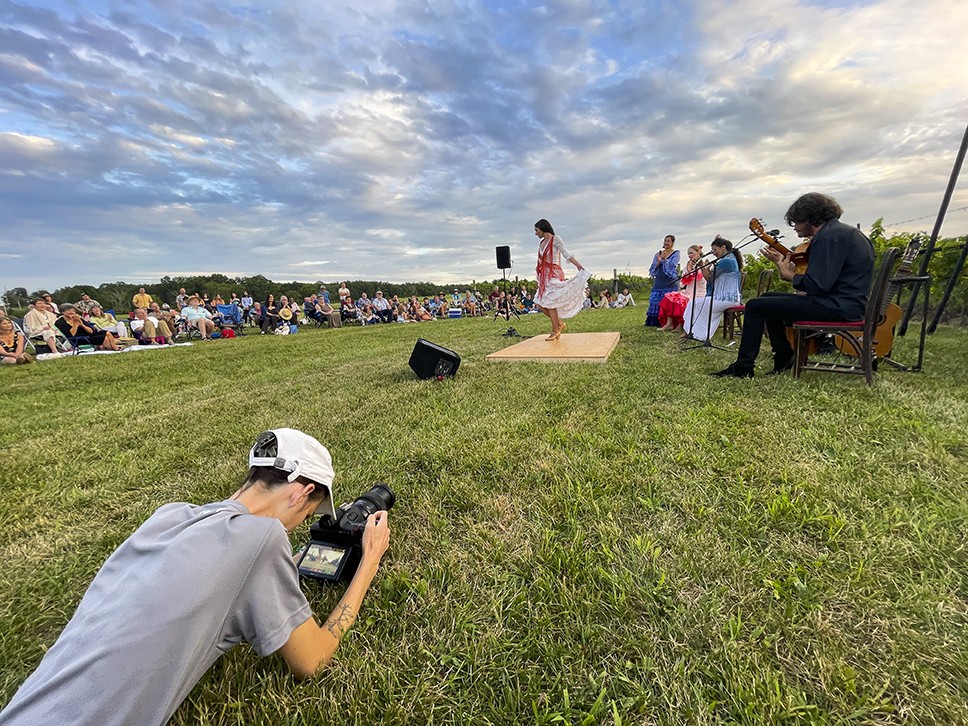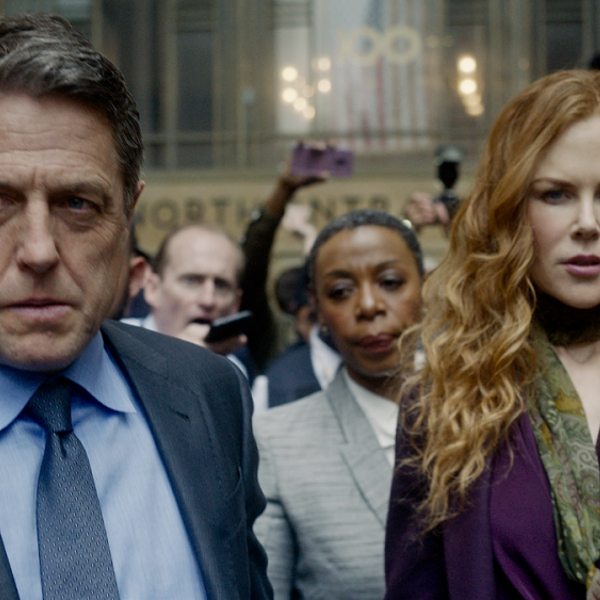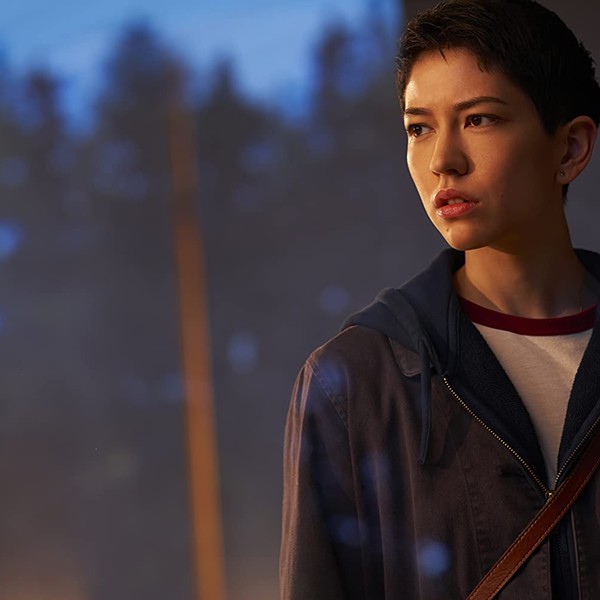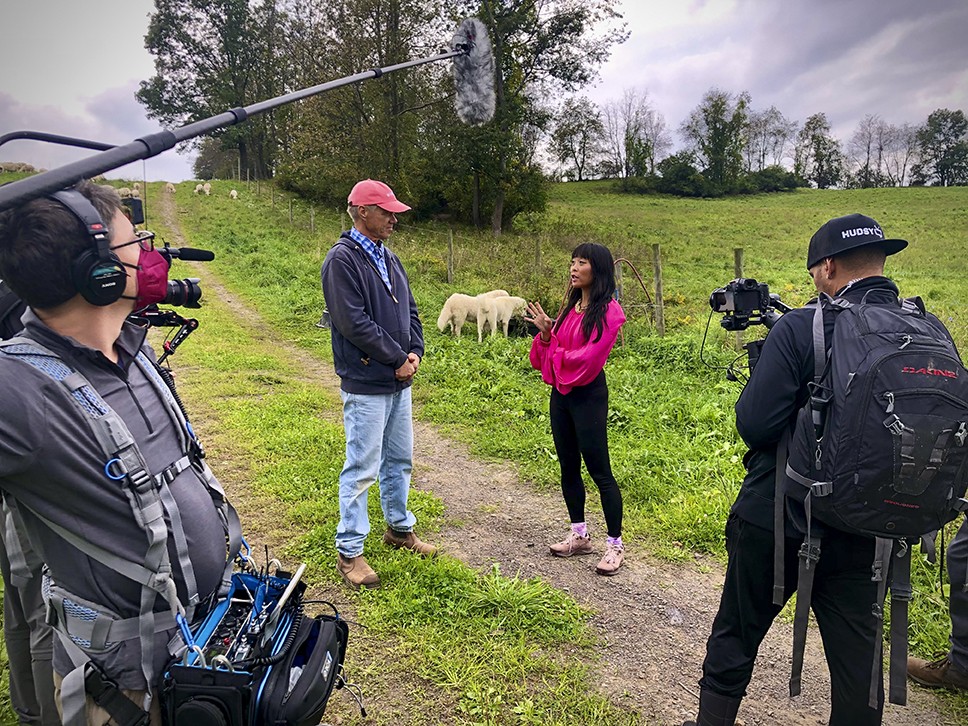
In recent years the Hudson Valley has become the backdrop of choice for film and TV shoots. From blockbusters like A Quiet Place to indies like Frances Ha, and to television shows including “The Gilded Age,” “Life & Beth,” and “Pretty Little Liars: Original Sin,” an increasingly long list of productions uses the region’s landscapes, architecture, and businesses to convey setting—a setting that may or may not intentionally depict the Hudson Valley.
Hudsy, a Kingston-based cooperative media startup, is taking a different approach. “We want to shoot the Hudson Valley for the Hudson Valley, and we want the Hudson Valley to be a character in our stories,” says Jesse Brown, who is—along with Angel Gates Fonseca, Laura Kandel, and Shawn Strong—one of the co-founders of the platform. Hudsy is pioneering an ambitious vision that they refer to as #WatchLocal, primarily via a new streaming platform that launched on June 1 and centers media about—and made by artists based in—the Hudson Valley.
“We’re focused [on] innovating on the social side of what [this] technology could be. Netflix, Hulu, they showed what [the streaming video] platform could look like, but they left out the equity side of it, they left out the human side of it.” —Jesse Brown, Hudsy co-founder
tweet this
Why #WatchLocal?
Hudsy’s app is available for iPhone, Android, Apple TV, Roku, and similar devices—and online at Hudsy.tv—with over 40 hours of both Hudsy originals and licensed material. While the logistics of the platform are relatively simple—“all the stuff that we’re doing has been out there—we’re not making new technology,” says Brown—the local and cooperative approach is novel. “We’re focused [on] innovating on the social side of what [this] technology could be,” he says. “Netflix, Hulu, they showed what [the streaming video] platform could look like, but they left out the equity side of it, they left out the human side of it.”
Hudsy showcases the region’s diversity through a range of largely documentary-oriented content about people and places in the region. Hudsy originals available at launch or scheduled for later release include Against the Grain, a film about West African rice farmers in Ulster Park; Firefly, a film about Kingston basketball legend Tay Fisher, who went on to play for the Harlem Globetrotters; a series called “Canopy Connections” in which strangers climb trees to have conversations about life; and more adventurous shows like “All-American Ruins,” which follows actor and musician Blake Pfeil as he explores abandoned spaces in the region (in the pilot episode, the Nevele Grande Resort), as well as a program called “New York Rocks,” a series that mixes entertainment and educational content to examine the geology of the Hudson Valley.
In addition to originals, Hudsy will distribute licensed content from regional creators that “spans the map of anything you can think of,” as Brown puts it, including Jon Bowermaster films about ecological threats to the Hudson River; a series called “Wine Whoopee” that visits wineries in the Hudson Valley; music videos from local artists like Decora and others; a documentary by Teresa Torchiano about the Rosendale Theatre; and lots more.
The three active founders (Fonseca, Kandel, and Brown; Shawn Strong still works with Hudsy but is not involved on a day-to-day basis) see the platform as a digitally oriented way of reconnecting on a local scale. “There is a difference between having production companies outside of the region and production companies that live within the region,” says Fonseca. “We have that connection to these communities. We tell their stories and then there’s a possibility we bump into them in the supermarket.”
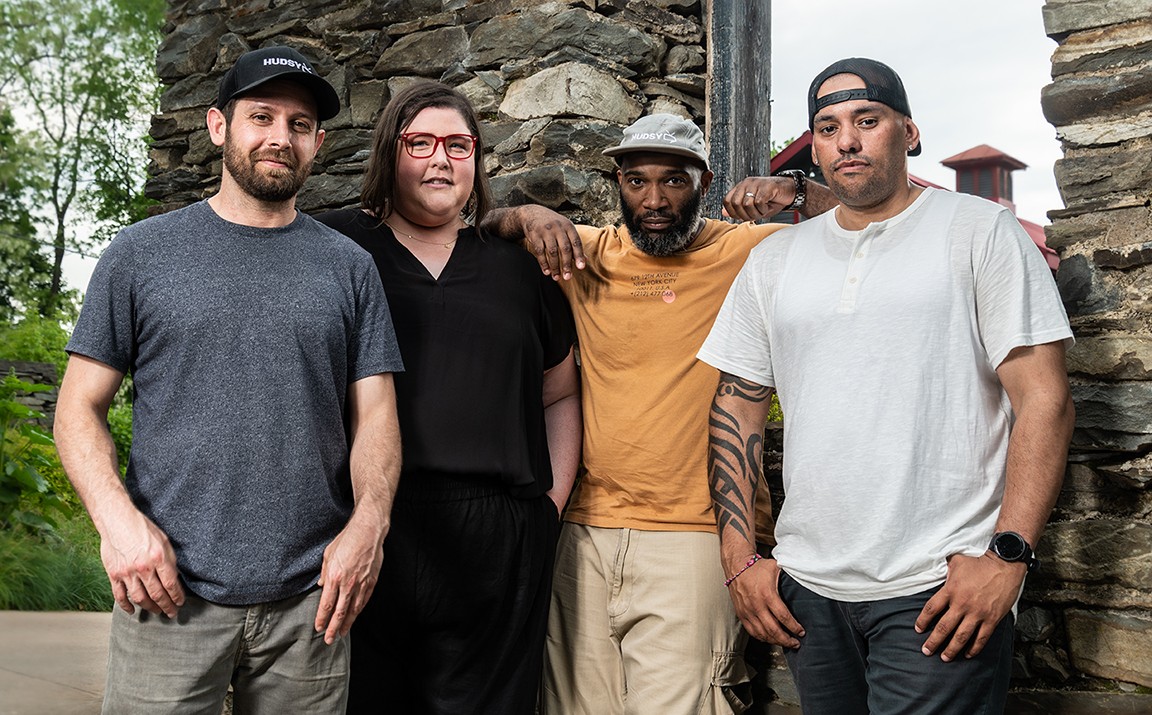
On a pragmatic level, the three also see Hudsy as a sort of inevitable way to “compete” in an increasingly concentrated, often alienating attention economy—a perspective that informed their choice, in 2020, to formally incorporate Hudsy as a multi-stakeholder cooperative (a type of cooperative owned by multiple membership classes—in Hudsy’s case, a founder class, worker class, and creator class). “[In] giving our attention to platforms like Facebook, [there’s] nothing right or wrong,” says Brown. “But it’s created the largest, most valuable companies in the history of our world. And as a local community, when we focus our attention on things in our own community, we can create that type of power and energy and resources here locally.”
“If you live in the region and you watch Hudsy, almost everything that’s on the platform you can then interact with within a two-hour radius." —Laura Kandel, Hudsy co-founder
tweet this
The goal of rebalancing an attention economy weighted toward massive, nonlocal institutions is a lofty one, but the Hudsy founders believe there are unique and immediate—even sensory—dimensions to #WatchLocal. “If you live in the region and you watch Hudsy, almost everything that’s on the platform you can then interact with within a two-hour radius,” says Kandel.
She mentions a seven-part series called “This Organic Life” that features regional farms, butchers, and restaurants working in regenerative and sustainable agriculture and food systems—as well as a show called “Staycation,” which will ultimately include an episode for each county in the region, advertising the things you might otherwise miss locally. “If you watch [the shows], and you’re like, ‘Oh my God, I really want to go to that restaurant, that looks amazing!’—you can actually get in your car and go eat that food. There’s an unlimited number of things that you can go out and do, and be around, and connect with, and learn from, right in your backyard. It really brings local to a whole other level.”
Creating a Sustainable Business
The project is ambitious—and expensive. Fonseca and Brown, both longtime media producers, have leveraged gear accumulated over years of work into Hudsy. But the costs of high-end video production are substantial, so to raise sufficient money, Hudsy secured a grant (initially one-year, ultimately extended to three) from the NoVo Foundation, the nonprofit organization headed by Peter Buffet that has been investing heavily—to the tune of over $100 million—in the Mid-Hudson Valley over the last decade.
Brown is pragmatic about this choice, acknowledging the opportunities afforded by NoVo’s presence in the region, and the good fortune of being able to avoid the more traditional venture capital path for a startup media endeavor. “How do we take what we need to support what we’re trying to build, get to a place of sustainability, and potentially show that this is a new path [where you] take some capital upfront, and use it to prove the concept, versus consistently needing those capital infusions?” he says.
As they go forward, Hudsy looks to chart a path to financial stability primarily via a subscription model ($14.99/month, $149/99 year; though there are also hundreds of free videos), though they acknowledge some of the details have to be ironed out. “I think the goal is to find our way to the number of subscribers that provides us sustainability,” says Kandel. “We’re still working on those exact numbers and continuing to find other partners and community members who want to be in support of our additional programming.”
They are committed to adapting as necessary in support of their values, and they believe it can be done. “We know this works on the connection level,” says Brown, referring to the shooting they’ve done in the field. They say they will be flexible in strategy, considering creative approaches to advertising, partnerships with institutions like colleges, and potentially additional philanthropy to make it work in the long run. “We’re not building this to sell,” says Fonseca. “We’re building this to keep around for a very, very long time.”
Fitting into the Region
Hudsy is launching in a region that has its fair share of dynamic media—what does Hudsy hope to add to the mix? “We’re not trying to take over anything that already exists, or make anything obsolete,” emphasizes Kandel. “We’re looking to amplify, and collaborate with, and become another place where you can actually find out more information, or deeper information. It’s another way to expand the information that is available to us and that we want to express.” Kandel points to a collaboration that Hudsy did with The River Newsroom last year for a story about the Stop Danskammer Coalition. They see this as one model for future collaborations with existing local media institutions. “The platform’s set up in a way where we can have partner channels,” adds Brown. “In the long run, what would really be a dream would [be to have] a lot of the local media organizations have their own partner channels within [the app]. By centralizing distribution, we can keep that power together.”
As another means of promoting regional collaboration Hudsy has launched a number of initiatives that intend to strengthen local filmmaking. This includes an apprenticeship program—to provide paid training to the next generation of Hudson Valley filmmakers—as well as a “Community Content Fund,” an annual contest that provides financing to local filmmakers, which last year gave out three $5,000 grants for local projects (chosen out of 42 entries).
Through these efforts, diversity and equity are built into the organization’s ethos. “You come on a Hudsy set—it’s not your typical white male set,” says Fonseca, who is Hispanic. He speaks about the lack of diversity in the industry, and Hudsy’s desire to bring new regional voices into filmmaking by offering practical experience. “There are a lot of people that are motivated in this [filmmaking] space—they just don’t have the tools. They don’t have the mentors,” he says.
“We’re really trying to [find] those folks that are super motivated, that want to be in [this] space, and give them that hands-on experience,” he adds. “Because I can tell you firsthand, my real skill-sets came from being hands-on, and not too many people have that opportunity.”
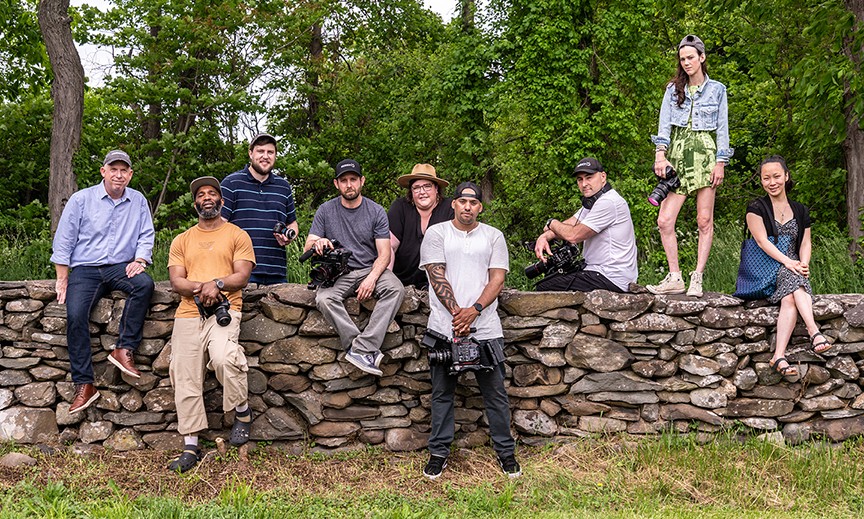
The last several years have seen a range of novel, progressive independent media projects take shape. Platforms like Revry (an LGBTQ-first streaming service), Means TV (a cooperatively owned left-wing streaming platform), and a handful of other initiatives have all staked out their own spaces in an often-consolidating media environment. Hudsy, in some respects, follows in this mold. They note that they are the only regionally based streaming platform, while also pointing to platforms like BRIC TV (a Brooklyn-based community TV organization) and DCTV (a local TV station in Washington, DC)—as inspirations with a geographic focus.
Whether they can succeed in attracting sufficient attention for a truly place-based streaming network is an open question, but they believe that this region is the place to do it. “The Hudson Valley historically is known for arts movements and people progressively thinking outside the box,” says Brown. “We think we’re really following in the footsteps of incredible people who’ve come here before us.
“People understand the long-term value of why [it] is important to invest in [this] kind of stuff. We believe in our community and we believe we’re going to get the support we need.”







